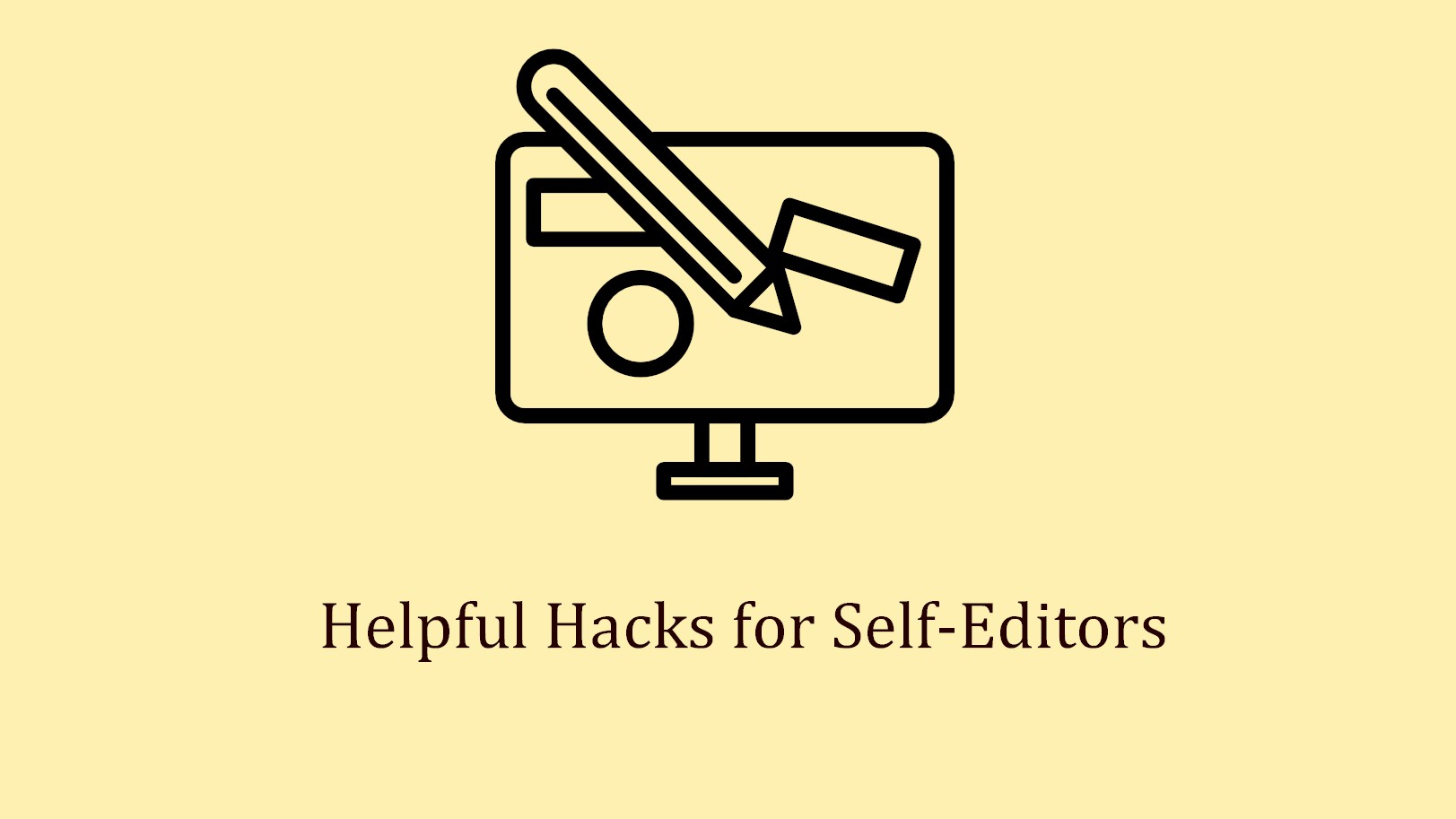It may seem frightening not being able to rely on an editor for your content. It shouldn’t be. As long as you understand your process and implement the right checks, you will be just fine. Here are some helpful hacks for would-be self-editors:-
Be Attentive When Writing Your First Draft
Pay attention to what you’re writing during your first draft. You’ll make the editing process a lot easier when you come to it.
Pause Before You Edit
Don’t edit your content immediately after completing your draft. Give yourself some time to view your content from a fresh, clear perspective before editing. Make sure you still leave yourself enough for the editing process though. It should never be rushed.
Break Regularly
When editing long form content, take regular breaks to stay on top of your game. Keep your thoughts focused throughout the process. You don’t want to miss anything vital.

Read Your Draft Aloud
While you edit, read your content aloud to check its flow and ease of readability.
Read Your Content From Another’s Perspective
As you edit, read your content from the perspective of an audience member. You’re not writing for yourself so don’t read what you’ve written as yourself. You want to use the eyes of your reader to make sure what you’ve written has the desired effect.
Format Well
Concentrate on your format while editing. Layout is important – leave enough white space and keep your sentences and paragraphs short. Accentuate your sub-headings, include relevant images and highlight important words and phrases in rich text.
Assess Potential Headlines
Use a headline analyser, like the one at the Advanced Marketing Institute, to assess and decide on which header is most suited to your target audience.
Show Confidence and Authenticity
You are an expert or you would not be writing on the topic. Portray this in your content by editing out any words that indicate doubt, like “perhaps” or “maybe”. Show that you are in command of what you’ve written and that your content is entirely believable.

Write a Strong Intro
After completing your first draft, place emphasis on your introduction during editing. Make sure that it is striking and powerful enough to maintain your audience’s attention.
Create Impact With Sub-headings
Sub-headings serve less importance than headlines but are still vital. An interesting and striking sub-heading catches a reader’s attention if they are skimming through your content. This encourages further reading. When editing, decide on important points to highlight as subheadings to enhance your content.
Start Consecutive Bullet Points Differently
Don’t start consecutive bullet points with the same word. Display your writing versatility by varying any bullet points you list. This enhances the readability of your content by encouraging your audience not to skim over your list, which is easier to do if each point begins in the same way.
Answer Possible Questions
Your content may draw questions from your audience. Attempt to predict these questions when editing and include answers to any you find. This authenticates your content and minimises chances of readers leaving dissatisfied.

Leave Out Messy Language
Keep language tidy. Sloppy content increases the chance that you’ll be recognised for the wrong reasons in future. Keep your audience fulfilled and happy, not frustrated and feeling robbed of their time.
Eliminate Redundancy
Remove the gloss. If a sentence means the same without a certain word, rather choose to edit it out.
Use Contractions
Contractions shorten the length of words, creating more personal, conversational tones in content. Unless you are writing ‘super-official’ content, using contractions like “I’ve” or “you’d” instead of “I have” and “you would” helps your reader relate to your content. So watch for these when editing.
Make Use of ‘Positive’ Alternatives
Concentrate on using positive words like “will”, “does” or “can” instead of negative alternatives like “won’t”, “doesn’t” or “can’t”. Alter your sentence structure to include positive writing.
Use Powerful Verbs
Strong verbs create impact in your content. Decide which are suitable to replace generic and common verbs and strengthen your writing.

Don’t Overuse Caps
Use caps to stress single words. Overuse of caps gives the impression that you’re shouting and creates reading flow concerns. It is imperative, when editing, that you restrict any capital usage to the beginning of sentences. Even consider the use of bold text instead of caps for single word emphasis.
Use Commas Sparingly
Use commas where necessary but don’t overuse them either. I am personally prone to write longer sentences with commas in my first drafts and then alter these while editing. Shorter sentences make content easily readable. Perhaps you are somebody who uses a comma to create a pause in a sentence? Make sure the pause is absolutely necessary before doing so.
Watch Your “ING” Word Usage
The use of “ing” words in the progressive form encourages the use of needless words. Words like “are”, “is”, “am”, “has”, “been”, “have”, “was” and “were” all clutter content if frequently used. Cut these down by minimising your “ing” words.
Be Aware of Synonyms
Often, when drafting, you write quickly and use the first words you think of. When editing, replace well-used words with synonyms that are less common. This helps your content to stand out. Advertise your writing skill and language knowledge by being different but don’t use alternatives that are too ‘high brow’ either.
Avoid Repetition
Continuing from the previous point, edit your content to avoid using the same words too often. For example, “possible” could be replaced with “potential”, “use” could be substituted by “utilise” and you could switch “replaced” with “substituted” when you notice repeated usage of words in the same paragraph.

Don’t Use Jargon
Not everybody reading your content understands industry-related words or expressions. Help your entire audience understand your content by editing out any jargon that creates potential comprehension difficulties.
Edit Out Clichés and Mixed Metaphors
Leave out metaphors that don’t make sense. They won’t appear regularly if you avoid clichés so come up with original metaphors from the beginning. Using clichés does not enhance your content.
Check and Recheck Spelling
You can never check your spelling enough. The worst thing for a reader is to have to wade through spelling errors. This creates irritation and you are less likely to be taken seriously as a writer. Use a number of different spellcheckers. It will be worth it.
Simplify Content
Check your ‘first person’ usage, your use of adverbs and the simplicity of your sentence structure. Be concise and use the active voice. Apps like the Hemingway App assist with this.
Check Grammar
Check your grammar when you edit. Grammarly has a helpful tool to assist with this process.
List Unlinked Information and Image Sources
Hopefully you’ve already made notes of all of the sources you’ve used. If you haven’t linked to these, list them after your content or assign credit in some other way.
Test All Links
Make sure all of your included links are strong and correct. Readers get frustrated with links that go nowhere or aren’t relevant. A reader clicking on a link means you’ve already piqued interest. Don’t lose it with bad linking!

Check for Plagiarism
Use a plagiarism checker, like the one available here, to check your rewritten source information. Make sure that your content is always original or correctly credited.
Keep Omitted Content
Don’t delete content that you’ve edited out. This may provide a point of inspiration in the future, or serve a purpose later in the editing process. Save it in a folder to revisit.
Skim Read to Assess Readability
Skim read your own content once edited. Many readers will do just that so carry out the process yourself beforehand. Check that your key words and phrases stand out, as your eyes will be caught by the same hooks that catch your readers’ attention.
Review Content in Another Form
Either print out and read your edited content or review it as a preview. By doing so, any errors or layout problems will jump out at you.
Re-Edit
Once you complete your first edit, start over. You know how good you are, but remind yourself that you’re human anyway. It’s amazing how many errors get found during a follow-up edit.
Edit Line-by-Line
With your second edit, try to edit each line or sentence individually. Any necessary tone or grammatical improvements become more apparent this way.
Read Content Backwards
This sounds extreme but it works. If you’re not entirely confident with your spelling after your final edit, read your content backwards, right to left; from the last to the first word. You pick up any remaining spelling errors this way as you’re forced to concentrate on every single word. This should be the final step before you begin proofreading.

Proofread
The importance of proofreading after editing can’t be stressed enough. Either do it yourself or pass it on to a colleague with grammatical and spelling talents that you trust. If you proofread your own content, take a lengthy break before starting. You need a clear mind and fresh eyes to do it properly.
Conclusion: Develop and Improve Your Editing Process
Self-editing may not come easily to begin with. Once you find a process and routine that works for you and maintain it with every new editing task, you will find it an easier to accomplish. Refine your process as you gain experience and self-editing may even become enjoyable.
- Technology and the future of books - July 29, 2021
- The benefits and importance of UX writing - July 29, 2021
- Use the science of music as a tool to enhance creative productivity - July 28, 2021
